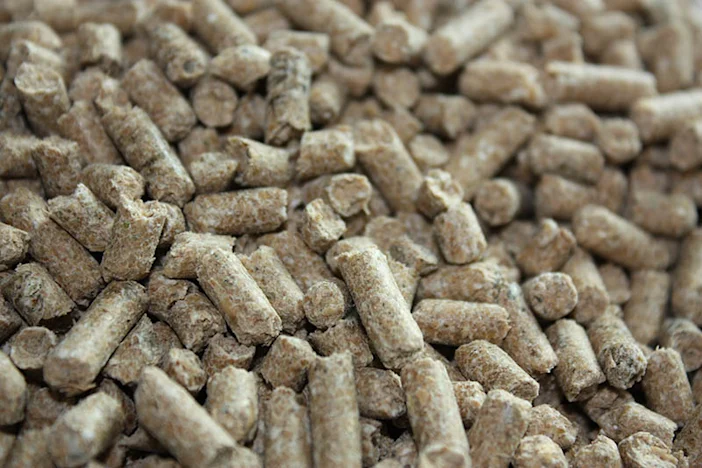Close
Our Products
All Products
Pleasure
Performance
Conditioning
Fibre
Breeding & Stud
Racing
Specialty
Supplements
Quick Feed finder
Free Diet Analysis
The Complete Range
Nutrition Centre
Articles
All About Fibre
Feeding for Condition
Competition Season
Laminitis
Breeding
Foal care
Building Topline
Gut Health
Senior horses
Racing & Breeding
Feeding in a Drought
Tools & Calculators
Competitions / Offers
Our Riders
Brand ambassadors
Junior Squad
About Barastoc
Why Barastoc
Our commitment
Barastoc's People
Our communities
Partnering with KER
Partnering with BHF
Sustainability
Find a Stockist
Contact Us

HORSE FEED FORMULATION - What is a KER Micronutrient Premix?
Well-formulated horse feeds typically contain several ingredients: cereal grains, protein meals, legumes, fibre sources, and molasses. Others might contain alternative energy sources such as super fibres, or high-fat vegetable oil or stabilised rice bran. All of these feedstuffs contribute marginally to the vitamin and mineral profiles of textured or pelleted feed, but for many classes of horses, further nutrition is required for optimal health. Enter a vitamin and mineral premix.
As the name suggests, a premix is a blend of nutrients, primarily vitamins and minerals, which are not found in sufficient quantity in typical feed ingredients. A premix is added to commercial feeds to balance the vitamins and mineral profile.
Kentucky Equine Research (KER) Micronutrient Premixes will vary depending upon many factors such as the category of horse such as growing and developing or performance, feeding rates of the intended feed, raw materials available to formulate the finished feed and fodder typically available to the horses.
Kentucky Equine Research (KER) incorporates the research it has completed over the last 30 years on vitamin and mineral requirements of the horse and its bioavailability, digestibility of vitamins and minerals. This has led KER to derive their own set of daily nutrient recommendations for every category of horse.
KER works with its partners around the world, such as Barastoc, to ensure that each micronutrient premix is specifically designed to meet the horses’ nutrient requirements.
Formulation experts know, for instance, there are several ways to fortify a premix with zinc for example, a micromineral that is important for many body processes, including carbohydrate and lipid metabolism. While it would be acceptable for feed manufacturers to use zinc oxide to nudge up zinc levels, equine nutritionists recognize the availability of other, more potent, sources. By way of example, zinc sulphate is a superior source of zinc, as evidenced by multiple research studies that have shown it is absorbed more completely by horses than zinc oxide.
To enhance mineral nutrition further, minerals found in KER Micronutrient premixes—such as copper, zinc, manganese and selenium, undergo a chemical process that conjoins them with amino acids and peptides. This process, called chelation, forms chelates which results in organic mineral forms that are more digestible than nonchelated minerals. Chelates can withstand a wide range of environmental conditions within the gastrointestinal tract, which maximises their absorption.
The types of vitamins used in KER Micronutrient premixes are selected to ensure that the horses needs are meet. Micro-encapsulated vitamins are chosen where available to ensure that they do not interact with other minerals resulting in a stable premix. Natural sources of vitamins such has vitamin E have been extensively researched by KER resulting in this type of vitamin E isomer being recommended as a source of vitamin E in KER Micronutrient Premixes.
The advantage of a KER Micronutrient Premix lies in the ability of feed manufacturers to evenly combine nutrients in large batches of feed. Certain vitamins and minerals, in particular, are included in such minuscule measures that it is advantageous to blend them with ingredients added in larger quantities, so they do not clump and concentrate in one part of a mixture.
Many feed companies will follow a two-step mixing process to ensure micronutrients are blended thoroughly in the finished product. First, vitamins and minerals are mixed fully with other finely ground ingredients and then made into pellets such as Barastoc’s Nutribit or Protenise mixer pellets. Second, the pellets are added and combined with the feed for uniform distribution throughout a batch. With an eye on fine-tuned feed manufacturing, mills can be confident that every bite of feed will have the appropriate nutrition.
Quality and consistency are key to any equine feed manufacturer and also to all horse owners. KER works extremely closely with all its micronutrient manufacturers to ensure that their quality certifications and practices are of the highest standard and that testing and traceability protocols are adhered too.
Research into the vitamin and mineral requirements and interaction between different vitamins and minerals is constantly being investigated by KER. These results of the research enable Barastoc and KER to ensure that the latest research is applied to their feeds and their customers horses to support the health and wellbeing of their horse.